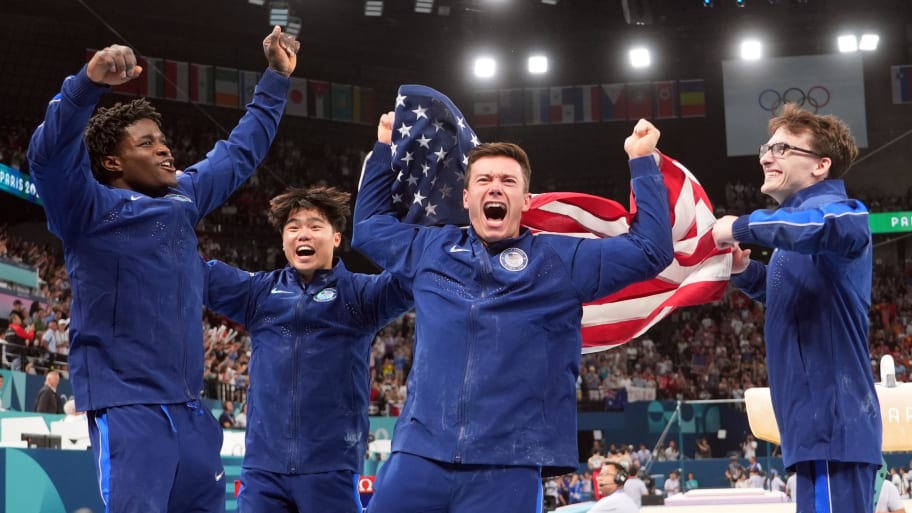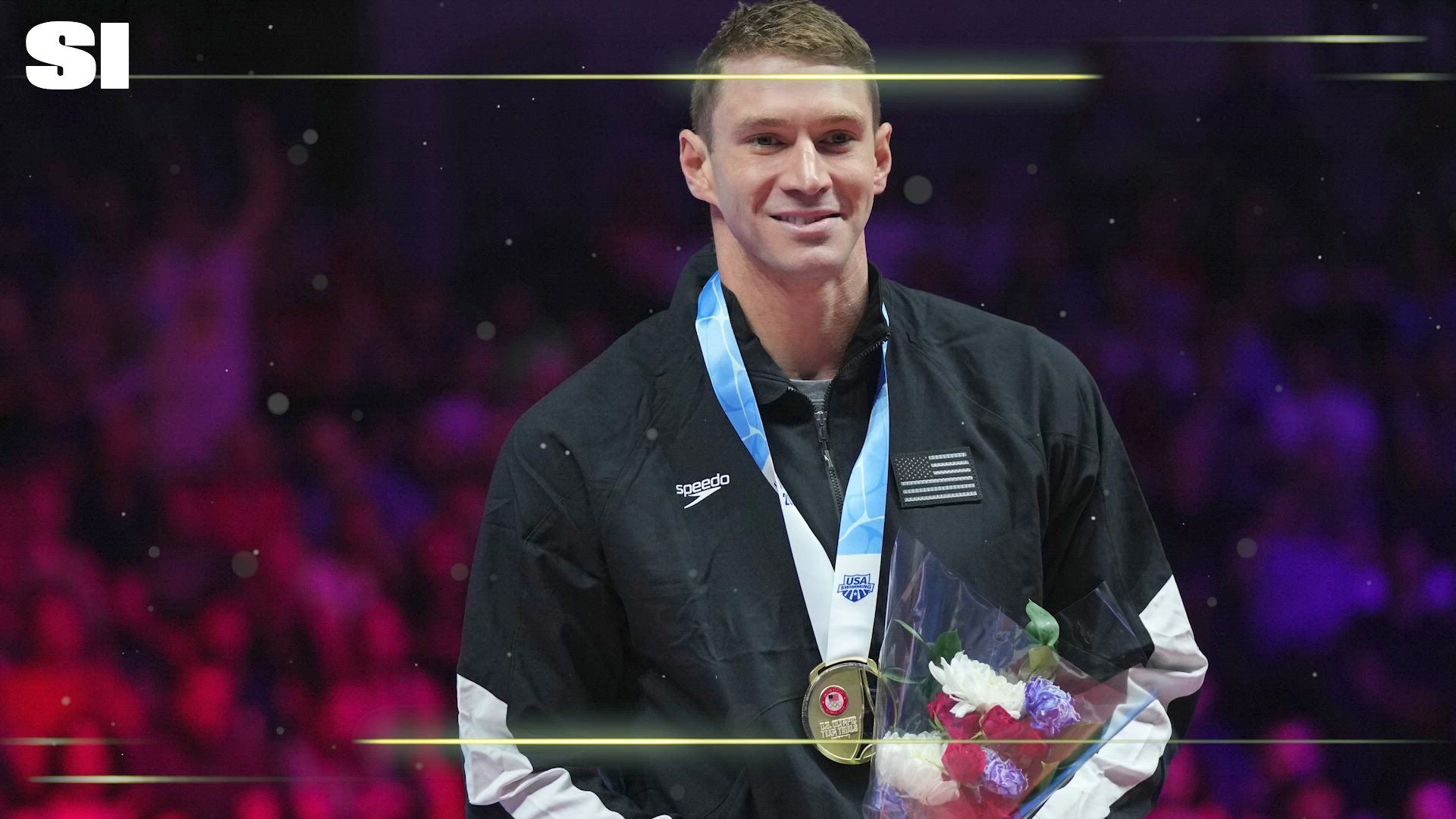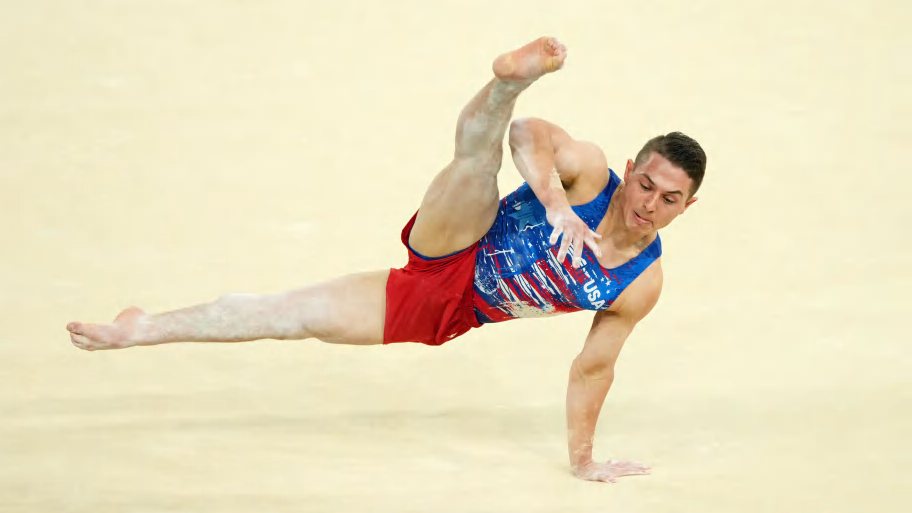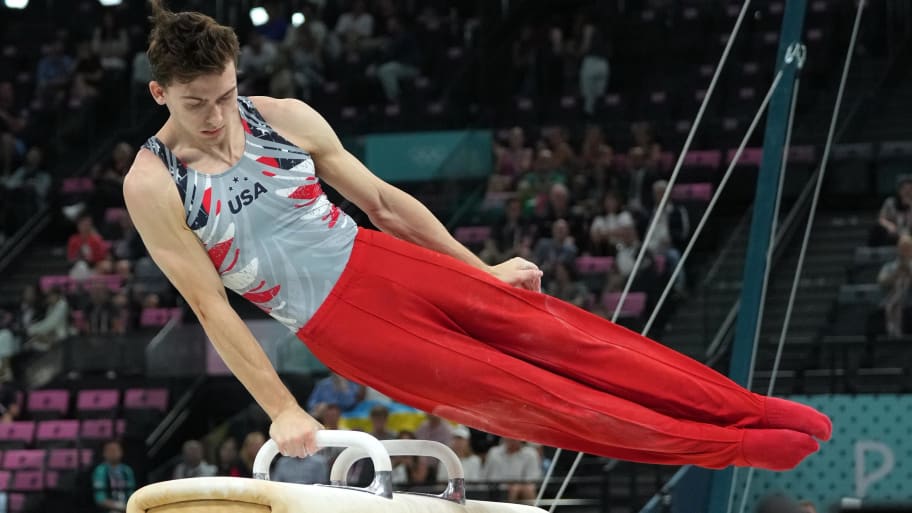

For two hours and 24 minutes, Stephen Nedoroscik waited. He watched as his teammates hit routine after routine, and he warmed up and tried not to think about what he’d understood since he saw the start list: He would decide whether the U.S. earned its first Olympic medal in the men’s gymnastics team event in 16 years.
Thirty-eight seconds later, as he flung himself off the pommel horse, he let himself think it: Bro, if you hit this dismount, your team wins a medal.
“And I stuck it!” he said afterward, the bronze dangling around his neck, a grin stretched across his face.
“There’s gonna be no pressure that matches that,” said U.S. teammate Asher Hong.
The gymnasts insisted later that they had abided by the rule they set for themselves not to watch the scoreboard. “We make jokes about it, when [the PA announces] the place we’re in, we’re like, ‘We don’t want to know that information! Stop telling us!’” said Paul Juda. But they could tell.
“It wasn’t a matter of knowing,” he said. “It was a matter of feeling.”

They felt good all day, which was a welcome change from a qualifying round that went so poorly that de facto team captain Brody Malone apologized to his teammates afterward. The Americans finished Saturday’s qualifiers ranked fifth and seemed to be a world away from top contenders Japan, who would win gold, and China who would take silver. They made only three individual finals: Frederick Richard and Juda in the all-around, and Nedoroscik in the pommel horse. But they reminded themselves that Monday’s final “was the day that mattered,” Hong said. “We got 18 routines to hit, and that’s our goal.”
The same four gymnasts—Hong, Juda, Malone and Richard—hit the first 17. Then came Nedoroscik.
By literal luck of the draw, the Americans would begin on the still rings, which meant they would end on the pommel horse, historically their most challenging event. Its mix of balance and movement has bedeviled generations of gymnasts. But not Nedoroscik, who loves it so much he decided in high school to specialize in it. And he has been so successful—in 2021 he became the first American to win gold in the event at the world championships—that the U.S. coaches decided their team should be four all-arounders and one man who can do only one thing.
It was a risky decision. But this U.S. team does not just tolerate risk. It embraces it. After a decade of frustrating results, the coaches decided heading into Paris to reshape the program, implementing a program that incentivizes athletes to attempt more difficult skills.
“We took a lot of hits on that, because not a lot of people believed in it,” said Syque Caesar, the coach who devised the system. “I even was critical of it, and I helped put it together. But I think tonight proved that it can work.”
Gymnastics scores comprise two elements: an execution score, which starts at 10 and decreases with mistakes, and a difficulty-score, which is open-ended. The Americans had been prioritizing consistency, which led athletes to choose easier routines that they were sure they could stick. This made for clean meets but meant that realistically they never had a shot at the podium, not when their opponents began with such higher potential values. So in 2022, the coaching staff instituted a bonus system that awarded gymnasts extra tenths of a point—sometimes even more than a point—in domestic competitions for attempting difficult skills.
It was a controversial change. Many athletes balked at first. Even high performance director Brett McClure—the official responsible for implementing the system—needed the hard sell. “Very hard,” he said. “But if it’s what the coaches and athletes want, to have that buffer to make mistakes and still make national teams, still get funding, do all of these things, then I support it, 100%.”
It’s just math, said Caesar. He likens it to another sport, baseball, that underwent a shift toward analytics two decades ago: “We Moneyballed the sport,” he said.
On Friday, they looked more like the Oakland A’s of 2024 than of 2002. But on Monday, they showed up ready to go, charging through the practice area while the other athletes looked on, bemused. Leading off the event, Richard stuck the landing on his rings routine and set off a U-S-A chant in the stands.
That became a trend as they hit routine after routine. The gymnasts began to feel as if the whole arena was behind them.
“Instead of trying to prove people wrong,” Richard says, “You’re proving them right.”

The Americans slowly built their advantage, improving their scores from qualifying on each apparatus.
“Every routine is an opportunity to build momentum,” Richard had told his teammates.
As they continued to perform flawlessly, their joy became almost desperate. Hong and Juda may have expended more energy cheering than they did competing. But after Malone—the 2022 high bar world champion who fell twice on the apparatus in qualifying and missed the event final—nailed his high bar routine, they huddled and reminded one another not to get too far ahead of themselves.
Meanwhile, Caesar was doing no such thing. He knew exactly where the team stood and exactly what it had to do. The margin over Great Britain and Ukraine was large enough that the U.S. needed only to avoid mistakes.
“We started crunching the numbers, and we’re like, ‘Just stay on the horse,’” Caesar said.
Nedoroscik did one better. He all but floated through his routine, reminding himself only to think about the next skill. And then, suddenly, there was no next skill. His teammates grabbed him and tossed him into the air. They draped themselves in the American flag and laughed and cried. Nedoroscik came to Paris for 38 seconds. The celebration will last much longer.
This article was originally published on www.si.com as Risky Strategy, Fearless Execution Brings U.S. Men’s Gymnastics Back to the Podium.







